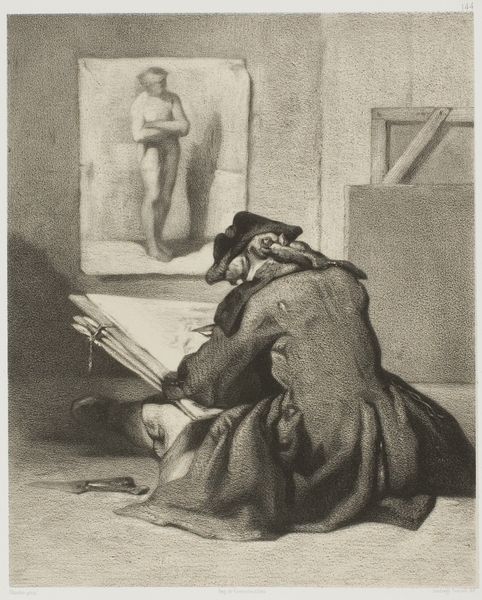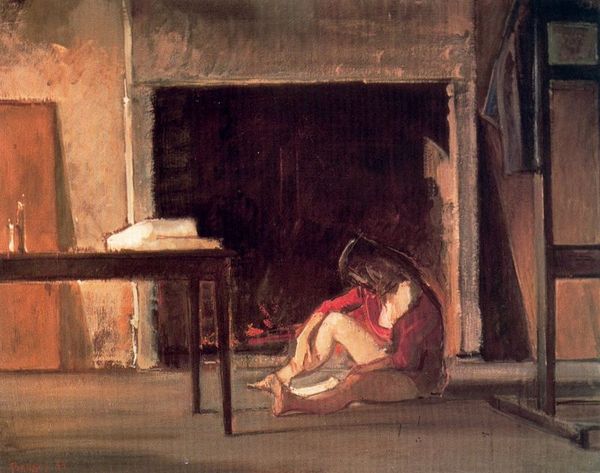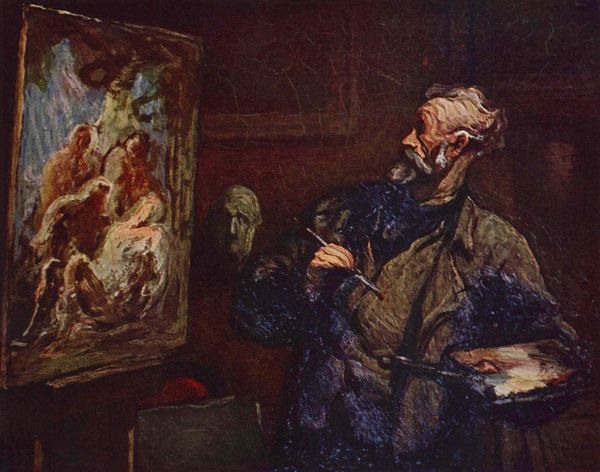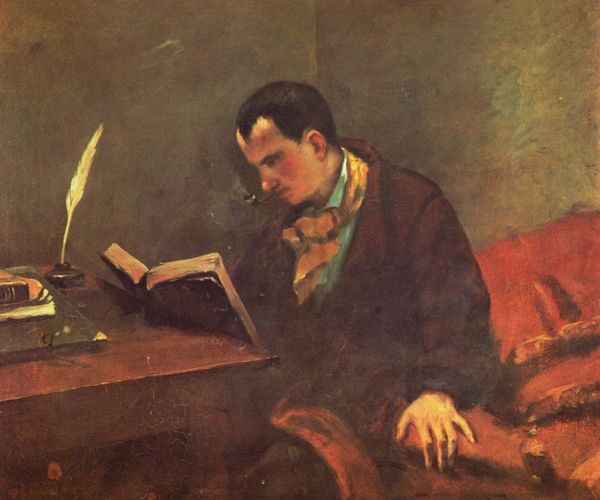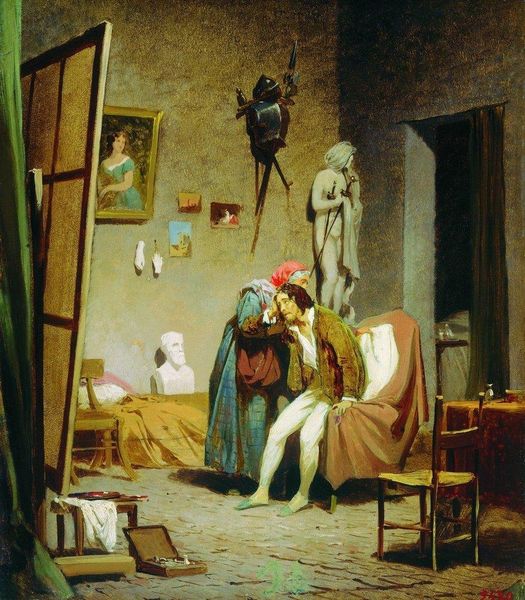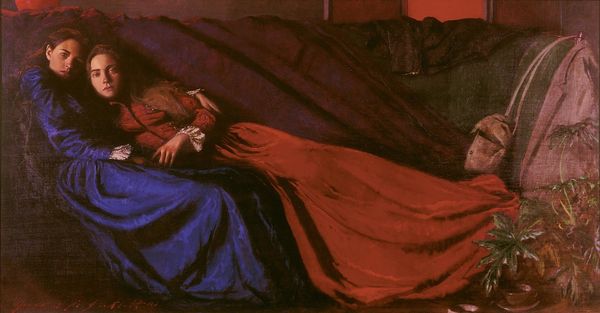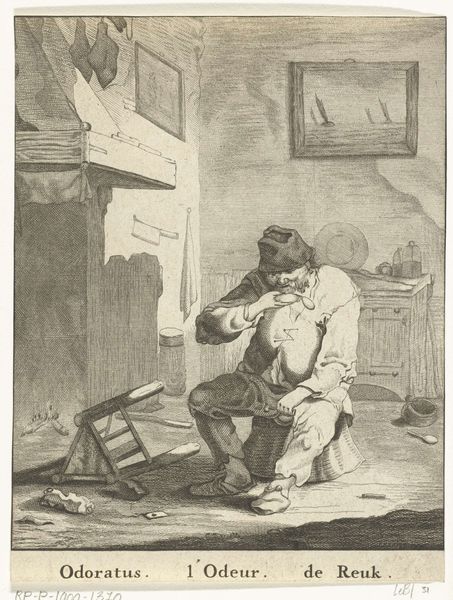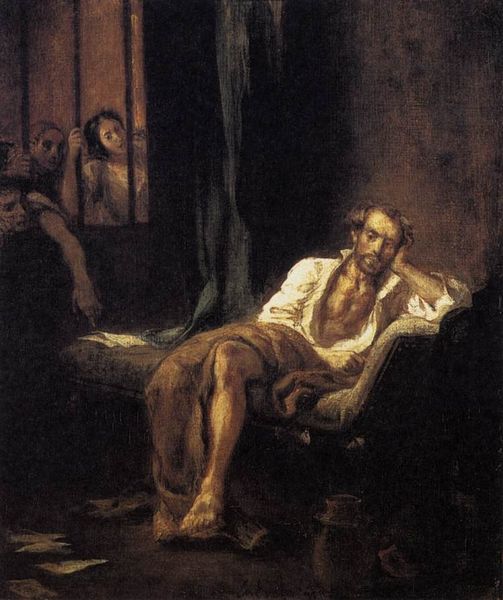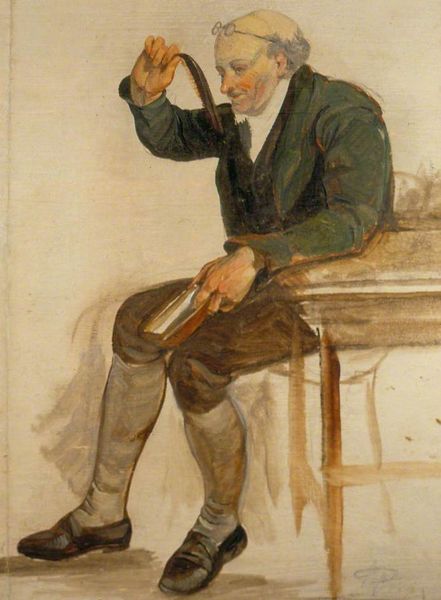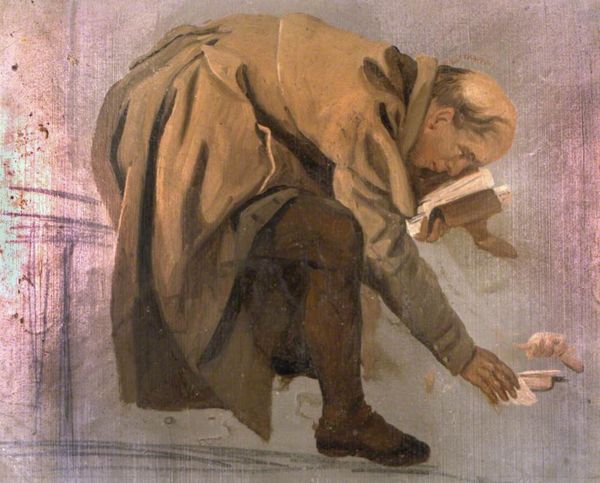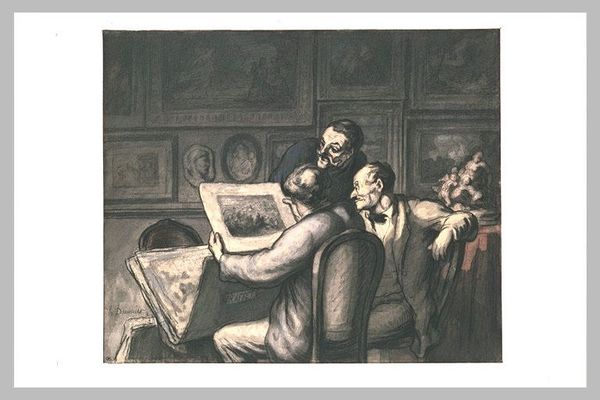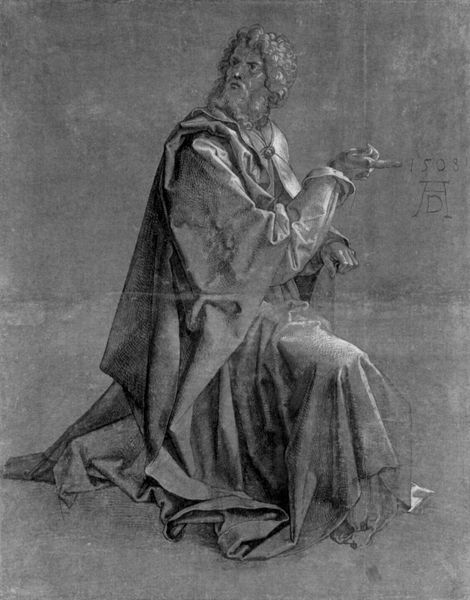
drawing, painting, oil-paint
#
portrait
#
drawing
#
painting
#
oil-paint
#
oil painting
#
genre-painting
#
portrait art
#
rococo
Dimensions: 17.5 x 19.5 cm
Copyright: Public domain
Curator: Here we see "Young Sketcher," an oil painting by Jean-Baptiste-Siméon Chardin, completed in 1738. Editor: It immediately strikes me as very intimate. The palette is muted, almost monastic, and the subject, seen from behind, gives a sense of being a privileged observer of his private practice. Curator: That’s a keen observation. The Rococo period is often associated with opulence, but Chardin favored these more humble, genre scenes of everyday life. Notice the academy drawing hanging on the wall. The young artist seems to be drawing after the figure. There is a real interest in capturing likeness and an almost stoic devotion to art making. Editor: Indeed. And it speaks volumes about the laborious process, the sheer *work* of art, especially when looking at the boy's threadbare coat, clearly well-worn from his daily studio routines. I wonder, where did Chardin source his pigments? The limited color range would have been a conscious choice. Curator: Chardin was fascinated with capturing authentic human experience and emotion. His paintings evoke a quiet sincerity. The red chalk drawing provides both contrast in style to Chardin’s soft-edged application of paint. And consider its potential significance; is it a projection of mastery to come, or perhaps simply an assignment at hand? Editor: The artist’s dress tells us a lot. We see how studio garments are crafted for the job and how the body conforms to their shape, absorbing paint, wear, and tear – evidence of physical labor and how material circumstances constrain creative work. Curator: Perhaps what he finds beautiful is that moment where art meets life—both his life as an artist and the larger world that he keenly observed. We are asked to recognize the inherent skill and dedication in a humbler vision of artistic pursuit. Editor: Right, and seeing art-making as labor lets us value art as a process of material engagement, shifting emphasis from purely aesthetic criteria towards social context. It changes how we see not only the art, but who gets to make the art. Curator: Exactly. This painting transcends a simple portrait. It acts as a subtle reminder that profound artistic expressions can be born from even the most humble of beginnings, steeped in dedication and intensive practice. Editor: Indeed, and in focusing on the tangible process, we remember art's ties to the everyday world, revealing so much about the society it comes from.
Comments
No comments
Be the first to comment and join the conversation on the ultimate creative platform.
